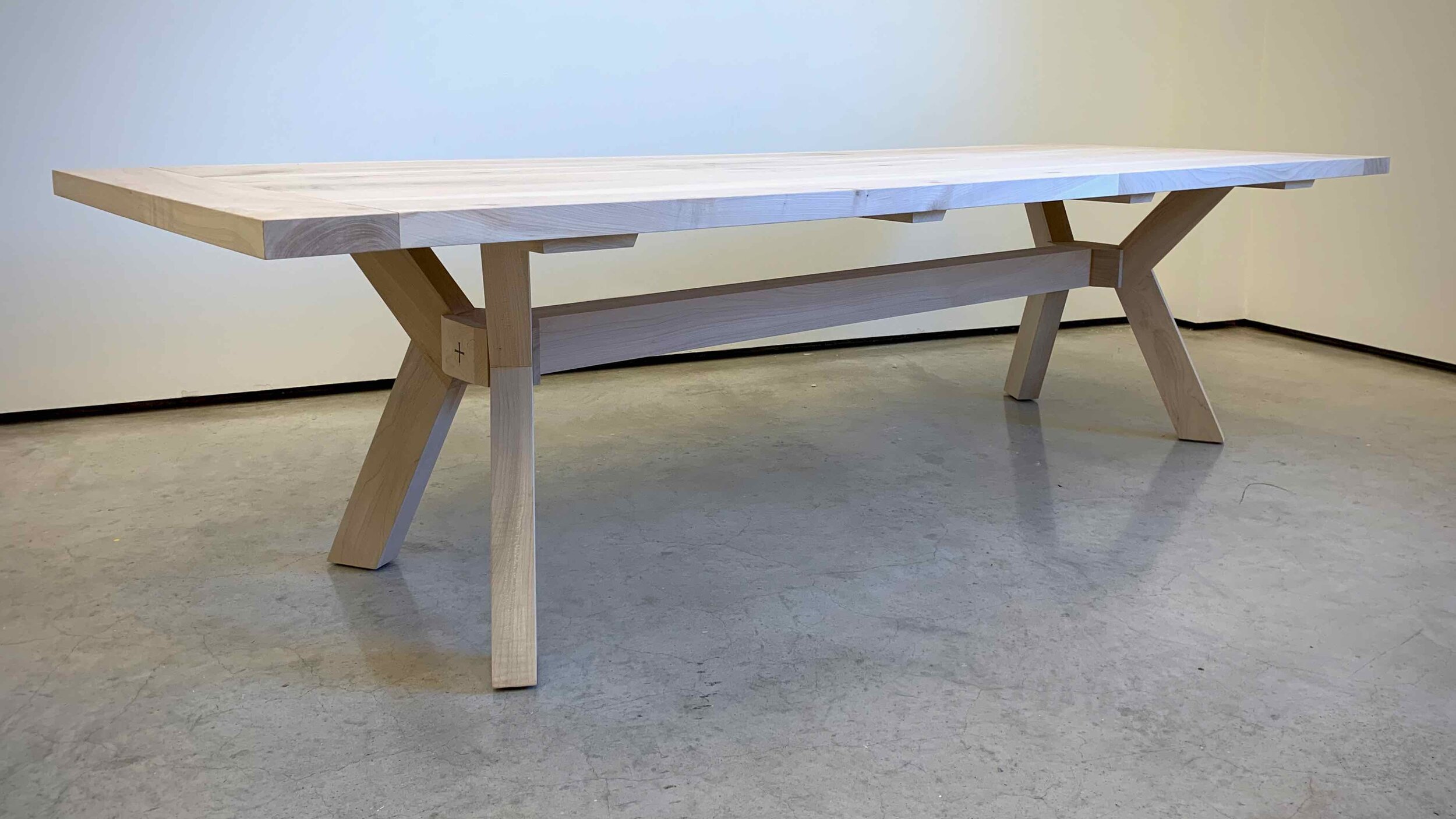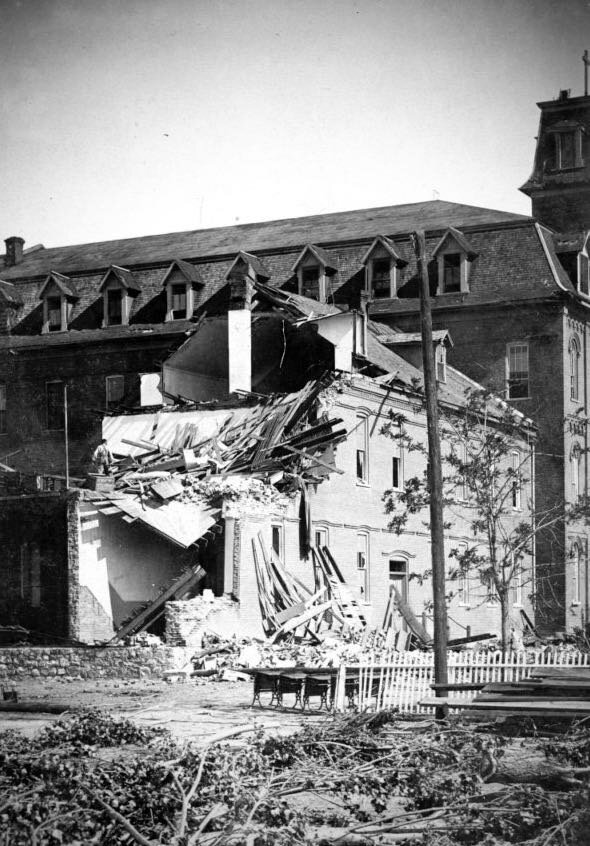Trees with a History
Every tree has a history. We just happen to know more about the history of some trees than others. Take, for instance, the silver maple that we used for a table crafted in the shop this month. We know a good amount about its history because it starts with the destructive tornado that hit Collegeville in the summer of 1894.
The Record, SJU’s student newspaper, reported that on the evening of June 27, “…a violent cyclone struck this place (Saint John’s) and in the space of a few seconds changed a scene of romantic beauty into one of ghostly desolation” (June 1894, p. 141). The tornado blew away whole sections of buildings and more importantly “…tore out by the roots the beautiful trees before the house…” Alexius Hoffman, O.S.B. would go on to write that “Few scars of the cyclone are visible on the buildings, but many and many a year will pass before the forest trees that were blown down that evening and left the surrounding country a bleak desert, can be replaced. God spare us from another such a visitation" (The Record January 1907, p. 15). It is certain that many trees were planted in the aftermath of this tornado, but no two trees enjoyed a more storied existence than the two silver maples which stood at the entrance of the Great Hall (the former Abbey Church) for the last 100 years.
These trees welcomed generations of monks, students and guests to campus and served as the backdrop to countless wedding, graduation and profession photos. They survived the construction of the new Abbey Church and served as the natural bridge between the old and new parts of campus. They even received names, as they were occasionally referred to as the Mary and Joseph trees. In 2010, however, the trees were thought to have been rotting and liable to come crashing down on an unsuspecting passerby. Within a few days the two trees were brought down, cut into logs and delivered to Saint John’s Pottery to be used as kindling for the next firing.
Fortunately, Richard Bresnahan took a careful look at the logs before cutting them up for firewood and determined that the wood was actually in very good condition. He brought in a portable mill and had the logs slabbed. It was from the slabs of these beloved trees that Abbey Woodworking was commissioned to design and craft a family dining table.
Since the lumber was dried as slabs, we decided that, instead of resawing the wood into thinner boards, we would try to keep the pieces as thick as possible. However, this table was going to reside in a newly constructed home, and we didn’t want it to feel too heavy for the space. So, after a few preliminary sketches, we landed on what we call a modern farmhouse design: the table’s splayed and angular legs provide a light, modern base to support a more traditional top with capped ends.
Typically, our wood comes to the shop as dimensional lumber that has been selected for clarity and quality. Working with slabs, however, you are responsible for cutting the boards yourself. Therefore, a good amount of time was spent on the bandsaw cutting the slabs into dimensional lumber. Once we had our pieces, we then determined which ones would be used for the base and which for the top. Since the top was to be 112” in length and our largest slabs were only 96” long, we had to splice a number of boards together. Due to the angles of the legs, we also needed to create a joint that cleanly housed their intersection with the supporting trestle. This took a bit of math, but we eventually came up with a housing that brought these various angles together with simplicity and strength.
When people see a wooden piece of furniture from our shop, they may ask about the type of wood, but won’t typically ask about the wood’s history. The Mary and Joseph table reminds us that while all wood has a history, some has a history worth telling. And if you are wondering what was planted in the place of the two beloved silver maples, we are glad to let you know that two more silver maples are now thriving in their exact location.
For more information about our wood and landscape, follow the links below:
Forest Stewardship
The Landscape
A special thanks to John Miller (pictured with logs above) for pictures of the Mary and Joseph trees and to Saint John’s Abbey and University Archives for archival photos.




















